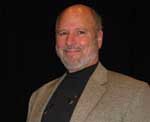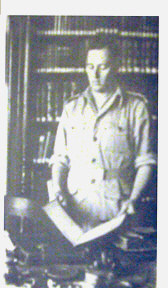By Jerry Klinger


JERUSALEM — Stephen Norman (Neuman) grew up in a typical Viennese Jewish home. It certainly was not a Zionist household. They were Austrians, not Zionists. His grandfather, famous in some circles, had died years before he was born. To his family, his grandfather was a failure. Yet, his parents honored the grandfather. Stephen’s middle name was his grandfather’s, Theodor.
Stephen’s grandfather Theodor had an epiphany, an insane, impossible dream. Manically, he chased the dream. He bankrupted his family for the dream. He estranged himself from his wife. He could not stand her, and she could not stand him. He drained her extensive dowry for his dream. He destroyed his health for his dream, dying at 44. He was a man broken in many ways. His family considered him a failure. His dream inspired some Jews but not most. Jews, especially in the West, thought him crazy even dangerous to them. Western European Jews, American Jews, British Jews had recently achieved, hard-won emancipation. This crazy man threatened them with his dreams of a Jew’s right to choose his fate.
Stephen’s grandfather was Theodor Herzl. When Stephen was born in 1918 there was no Israel, no solution to the Jew’s 2,000 years of exile and wandering. There was no end to antisemitic revile. In the years before the Holocaust, Herzl’s idea saved some of European Jews but only some. More than 6,000,000 died abandoned by the world for being Jews.
As the dark clouds of the Nazi nightmare filled the skies of Europe, Stephen’s parents did what any parent would do. They sought to save their only child. They turned to the Zionists for help. The Zionist Central Committee in Jerusalem very reluctantly agreed to send Stephen to Britain for an education. Stephen’s parents remained in Vienna and died in Theresienstadt.
It was in Britain that Stephen started to learn about his grandfather and Zionism. He became an ardent Zionist, a believer in his grandfather’s dream but the War came first. Stephen enlisted in the British Army and was sent to Ceylon as an Artillery Officer. Late 1945, the war over, Stephen waited for the transport in Cairo that would take him back to London for discharge.
Fate intervened. His transport was delayed. Stephen took the opportunity to do a quick air stop to Palestine. He wanted to see what his grandfather had started. Stephen arrived in Palestine and was more than smitten with it. Many Jews greeted him with warmth. Others greeted him with animosity as the late arriving Zionist interloper, and symbolic heir apparent to Herzl, potentially would take the wind out of their sails.
Norman kept a diary of his short trip to Palestine. Two key entrees left their impact. Stephen wrote about Jewish children he saw in Palestine. They were different. Their faces were not like the faces of the Jewish children in Europe.
“You will be amazed at the Jewish Youth in Palestine…they have the look of Freedom,” he wrote.
Freedom for the Jewish people – a truly radical idea. He could see it on the faces of the children.
A few lines later he wrote, “when you come to Palestine you are reborn a little bit. When you leave, you die a little bit. I will return.” He never did.
Stephen arrived in England not fully sure of his tomorrow. The British decided it for him. He was specifically, personally, barred from ever returning to Palestine. He was a Herzl. He could become a potential leader of the Yishuv.
Chaim Weizmann, eager to get Norman out of the Zionist limelight, pulled some strings. Weizmann arranged for Stephen to get a small job at the British Embassy in Washington, D.C. – far from Palestine.
That Washington summer, Stephen learned his entire family had been exterminated. He learned of the camps, the murders and suffered personally for every survivor languishing behind British and American barbed wire with nowhere to go. He was a Herzl and he could do nothing. He could do nothing because he was a Herzl.
November, he shared some personal effects with Elias Elath, the later first Israeli Ambassador to the U.S., asking him to hold them until his return. In the morning Stephen went to the Massachusetts Ave bridge, deeply depressed. He hung his tweed coat neatly over the rail and jumped. The last Herzl died 90 feet below.
It was 18 months since the end of the war and 18 months before the birth of Israel. In later years, one end of the Bridge was the relocated British Embassy. On the other end of the bridge would be the Islamic Mosque and Cultural Center. Stephen Norman, the Jew, the last descendant of Theodor Herzl, was trapped between the intransigence of the Muslims and the heartlessness of the British. He could not see that the sun was beginning to rise that dark grey morning in the Eastern sky.
The Jewish community buried him. The Jewish Agency said they had no money, not even for a tombstone. Stephen Norman was forgotten.
It was by chance I found his grave in the old, S.E Washington Jewish cemetery. The cemetery was in a drug infested, decayed part of the city. I was advised to wear a flak jacket and be gone by dark.
Stephen’s story needed to be told. I wrote a piece for the Jerusalem Post. Saul Singer, the Post editor changed the title to “A Zionist Who Deserves to Come Home.” I had never thought of bringing him home before. I had no idea how to do it. I did not know it was supposed to be impossible.
Singer was right. He saw something in what I had written that I did not understand. I never thought doing the right thing was the wrong thing for so many disinterested Zionists.
Over the next seven years, every Zionist door was slammed in my face. Some, I learned, could not figure out how to make money on Stephen’s coming home. Most could not be bothered, including Israel.
Stubborn and stupid must be connected. I doggedly continued until I managed to connect Rabbi Amar, the Jewish Agency and P.M. Ehud Olmert. With Israel reluctantly behind me, I disinterred Norman and held the bones of Theodor Herzl’s grandson, preparing them to come home.
American Zionism was nowhere to be found.
December of 2007, in a State Ceremony, Stephen Norman’s journey ended. He was buried in the plot for Zionist leaders on Mt. Herzl, next to his family. His grave is off centered at the end of the row. The Zionists never knew he existed and had never planned for his return.
A few years later, I built the Stephen Norman garden on Mt. Herzl next to the Herzl Educational Center. The garden is used by thousands of students, tourists, soldiers every year for educational purposes.
At my insistence, Stephen’s few words were put on the retaining wall. Stephen summarized the entire meaning of Israel, the entire why of Israel’s existence. I wanted the many eyes wandering the garden, bored by more lectures on Zionism, to read:
“You will be amazed at the Jewish youth in Palestine…they have the look of freedom.”
This Chanukah season, this time of year when we remember the fight for freedom, maybe someone will go to Mt. Herzl and put a small stone on Stephen’s grave.
The last Herzl is home.
Jewish Freedom is real.
*
This article initially appeared in the Times of Israel. Jerry Klinger is the president of the Jewish American Society for Historic Preservation www.JASHP.org